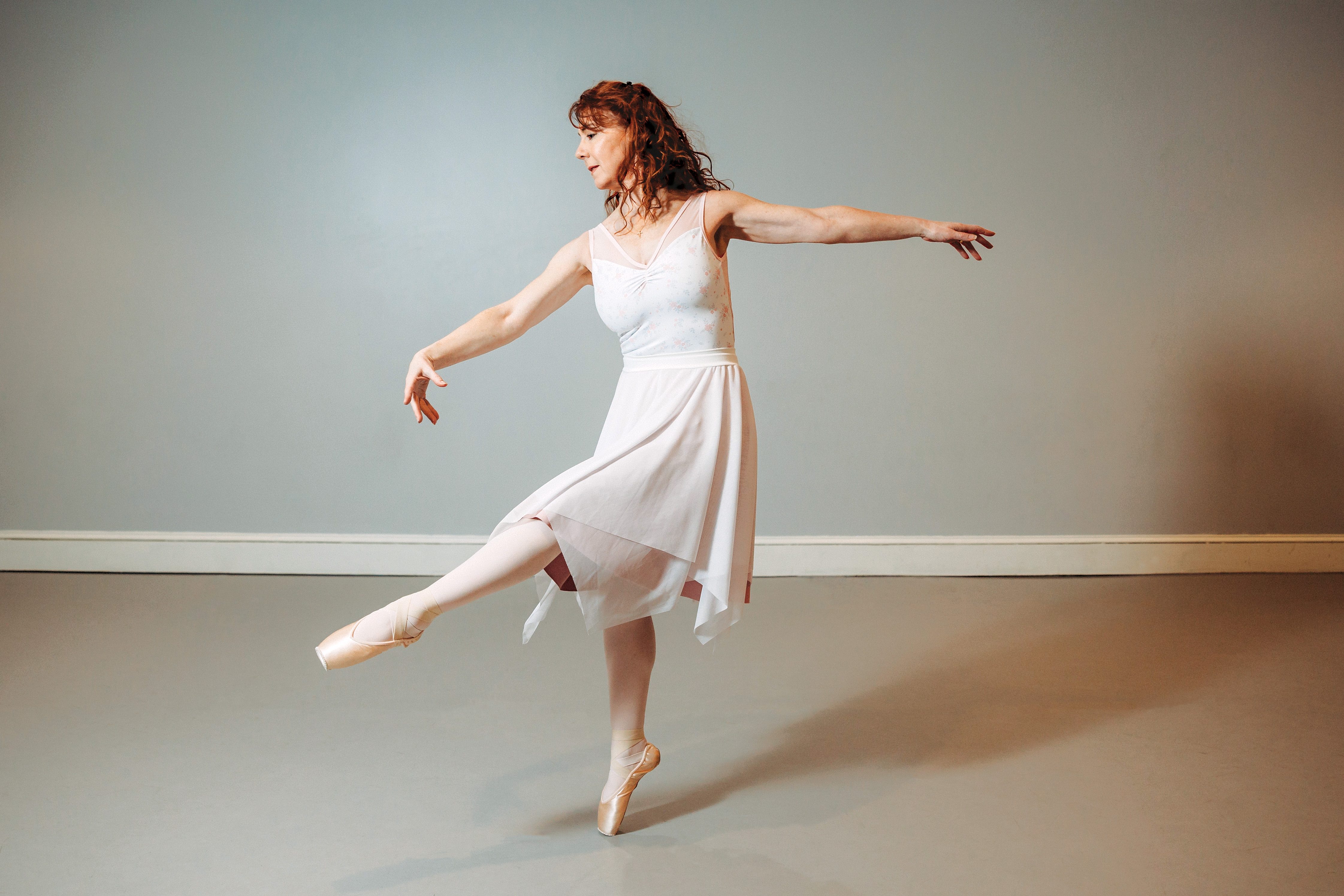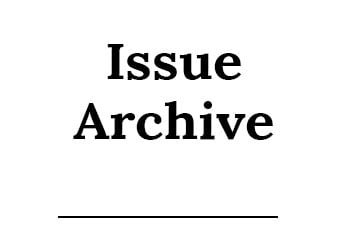Overcoming pain, whether mental or physical, is exhausting and can cause sufferers to lose hope. But it also can bring out the best in people. These stories highlight the triumph of the human spirit, showcasing the power of perseverance and the unselfish act of sacrifice for the greater good.
Surrounding Teddy in the photograph are the co-founders of The Teddy Foundation, his mom Alaina and his mom Mary, along with his sister Lucy and cousin Chloe. They hold his beautiful birth photograph and the precious memories with him close, always. Not pictured is Teddy's dad, Matt, co-founder.
THE TEDDY FOUNDATION
HELPING PARENTS COPE WITH LOSS
Theodore “Teddy” Kurenda’s time on earth lasted 33 minutes. His parents hope his influence will touch lives for decades to come. Matt and Alaina Kurenda’s first pregnancy ended in miscarriage, but in late 2020 they found out they were expecting again.
“We were over the moon but also nervous,” recalls Alaina, 28. Soon after the new year, tests began to show some concerning signs. At 18 weeks, the Shillington couple was told the issues had become serious: there was excess fluid buildup, and Teddy’s kidneys couldn’t be found on the ultrasound. Given the option to end the pregnancy, the Kurendas declined. “We decided that as long as Teddy was willing to hang on, we were willing to go through this journey with him,” Alaina says. “But every time we went to an appointment, we kind of had ourselves prepared that he might not have a heartbeat anymore.” The ensuing weeks included visits to Hershey Medical Center and a clinical trial at Children’s Hospital of Philadelphia, all to no avail.
They were told there was a 99 percent chance he would pass in the womb and a 100 percent chance he would pass soon after being born. They decided to schedule a cesarian section for 37 weeks; if there was even an infinitesimal chance of a miracle occurring, they wanted to give him that chance. “He was born alive, which we were told would not happen,” Alaina says. “So that in itself is our little miracle.” The doctors tried to get Teddy’s heart beating normally, but his parents soon determined it was too much stress on his 3-pound, 6-ounce body. After his passing, the Kurendas squeezed a lifetime of memories into two days, getting him baptized and introducing him to family and friends. Their young niece read books to Teddy and filled him in on their lives.
“After that, I decided I can’t just sit and sulk in my sadness,” Alaina recalls. “I had to do something. So I started the Teddy Foundation.” With enthusiastic support from Matt and mother Mary, Alaina launched the organization, which sends care packages to families in similar situations, be it a miscarriage, an ectopic pregnancy or a life-limiting diagnosis. More than 100 care packages were distributed in 2022.
Each bundle consists of homemade and donated items, including a plush teddy bear, framed artwork, handmade bracelets, an angel stone, magnets and literature. Alaina says the packages are often purchased for family members or friends experiencing loss, which she considers a beautiful way to support someone when you really don’t know how else to help.
“Some people believe they are helping by not bringing up your loss,” she says. “In reality, parents who lost a child feel as though you are forgetting their baby. Helping them carry their grief instead of hiding it away is most helpful.” Alaina offers her skills as an amateur photographer to couples whose time with their little ones is likely to be devastatingly short. Perhaps most importantly, she also offers support. “I make sure I take the time to read the story of everyone who submits a request and I write them a little letter,” she says. “And I just let them know, if you need to chat, here’s my phone number. Because when I was going through my pregnancy with Teddy, I wish I had that. I wish I had someone to call up and say, ‘Hey, I’m feeling really weak today, and I feel like I might need to make a drastic decision. Can you talk about it with me?’” As of now, the foundation is a family affair, but they’re in the process of assembling a board.
Donations are always welcome, Alaina says, as are volunteers for community events like the West Reading Fall Fest. Almost exactly one year to the day of Teddy’s birth and passing, and all the grief associated with it, the Kurendas experienced the pinnacle of joy, welcoming Lucy to the world. During a recent interview, the baby girl appeared determined to make her presence known, at times overtaking the conversation with the dulcet sounds of gibberish. “She’s a bright star in our story,” Alaina says. “That’s for sure.”

DICK & JASON
CLOSE FRIENDS WHO SHARE MORE THAN A BOND
When Jason Hornberger got the opportunity to honor his late mother-in-law, offer much-needed assistance to a family friend and teach his children the importance of acts of kindness, he took it. All he had to do was donate an organ. Twice. In 2015, Dick Henry, a fixture of the Berks County community, announced that he needed a liver transplant.
The realtor and auctioneer had been diagnosed with NASH (nonalcoholic steatohepatitis), an inflammation of the liver that resembles hepatitis caused by alcohol abuse but arises from something else. “It must have been something that was hereditary,” says Henry, 74. “I really didn’t drink for many years prior to that, and it just progressively got worse. So, we started searching for a donor.” Due to the philanthropist’s standing in the region, more than 60 people applied to help. Unbeknownst to Henry, his close friends from the Hornberger family were among them. And Jason was a match.
For Hornberger, the act had deep meaning. “Dick’s a longtime family friend, and I certainly appreciate him for everything he’s done for the community,” says Hornberger, 35. “But it was also a way for me to honor my mother-in-law. She died suddenly when my wife was only 11, and she was an organ and tissue donor when she passed.” After doing some research, the Shillington resident determined that he wouldn’t sacrifice much by donating his liver. He just needed to exhibit “a little courage and a tolerance for pain.”
The liver transplant occurred in late 2016. Almost immediately, Henry’s health began to improve. “It made a tremendous difference,” the Wyomissing resident says. “I was in a very weakened state. I was down to about 130 pounds.” But Henry’s complications were not over. Nor was Hornberger’s life-saving generosity. The anti-rejection medication Henry took for his new organ eventually took a toll on his kidneys.
By 2021, they also needed to be replaced. Once again, Hornberger leapt into action. His employer, Orrstown Bank, offers a generous policy for organ donors and was very supportive when he mentioned he wanted to do it again. Hornberger dealt with more pain the second time around, but he came home from the hospital the day after the surgery and returned to work right away.
His only sacrifice, he says, was not being able to lift his children for a few weeks while he healed. “Giving a part of my body, if that’s going to do more good for Dick than it will for me, of course I’m going to help,” Hornberger says. “It’s something that is bigger than me. We can multiply the good in the world by making a little bit of sacrifice. I got a compliment from one of my best friends right afterward that if I can give an organ, then he’s got to at least give blood.” Back in action and eminently grateful for the connection that turned his life around, Henry often gets phone calls from people wanting to discuss potential donations, and he says he gives them the best advice he can.
Hornberger continues to live his life knowing his selflessness has allowed his friend to continue to live his life. He’s not concerned about complications; as a living donor, he would get bumped to the top of the transplant list if something were to happen to his kidney or liver. According to Henry, the University of Pennsylvania told them it was the first time they ever had a living donor give two organs. According to Hornberger, it was no big deal. “All I did was lay down and let really smart doctors do what they do for a living and take some pain meds on the back end,” he says. “What I did wasn’t that heroic. I didn’t run into a building that was on fire. I didn’t really have to do anything all that crazy. It was just saying ‘yes’ when somebody asked for help.”

ANNDRIA CIABATTONI
LONGTIME DANCER LAUDS HER HERO DOCTORS
Undergoing two surgeries in a little over a month has kept Anndria Ciabattoni on her toes. Which was the point. Or, rather, the pointe.
An information technology worker at Met-Ed by day, Ciabattoni has danced as a hobby for most of her life. Decades of ballet and pointe eventually took a toll on her hips. About five years ago, the pain became unbearable. She attempted cortisone shots, natural treatments and physical therapy, but the aches remained. Doctors told her she was bone on bone, with total hip replacements the only option to allay the discomfort. At first, she wasn’t interested.
“How could their hips possibly be better than the ones I was born with?” the Reiffton resident remembers thinking. “But it had to happen. It was kind of crazy. I was having trouble walking around the block, but I could still put my pointe shoes on and take class. I had a recital in June that I wanted to get through for fear that it would be my last one ever.”
The decision to proceed was solidified when she discovered on Facebook a hip replacement group for active people, where she saw someone with a double replacement running marathons, even a woman showing off her post-surgery pole dancing skills. She scheduled surgery for her left hip in June, with her right hip following a month later.
The surgery is one of the most common elective procedures, according to Ciabattoni’s surgeon, Dr. Kenneth J. McAlpine Jr. of the Bone & Joint Care Center, located inside the Doctor’s Office Building in Reading Hospital. And that is mainly because people are staying active longer.
“The main reason we do any replacement is for arthritis, and as people stay healthy longer they’re able to be more active, so they have more wear and get more arthritis,” he says. “If they want to keep up their activity, the best way to do that is a joint replacement.” When Ciabattoni told McAlpine she may want to do splits again, he altered her prosthesis to a dual-mobility model, featuring two parts that move.
“Hip replacements can get a large range of motion but it’s not a given,” he says. “So there were some things on my end we could do with specific implants to give her as much mobility as possible.” McAlpine says recovery from hip replacement surgery is fast. Patients usually can return to normal movements in six to eight weeks, and some people recover even quicker.
Ciabattoni says she was doing laps around the hospital hallway with a walker a few hours after the surgery. Certain things like tying her shoes or picking things up off the floor – movements that included bending at the hip joint – were hard at first. But their difficulty eased quickly. She maintained her foot strength by performing exercises using her barre at home. “Where I am now compared to where I was before this is mind-boggling amazing,” she says. “I’m doing stuff that I couldn’t do before, because some things just hurt too bad. The pain stopped me from doing it. And I didn’t know it at the time. But you take the pain out of the equation and, ‘Wow, this is happening.’”
She returned to classes at Allegro Dance in West Reading the week after Labor Day, only a little over a month after her second surgery. She felt a bit wobbly but was thrilled to be back on her feet again. The company’s annual recital is in June, taking place a year after what she feared might be her final performance. Sporting two new hips and one new lease on life, Ciabattoni can’t wait to be on that stage. “Everything’s been perfect,” she says. “I just can’t wait to see how much better it continues to get.”
















